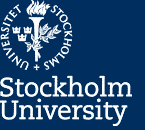
In March 2012, a German research group led by Torsten Bringmann at the University of Hamburg presented an analysis of public data from the Fermi satellite suggesting a signal from dark matter. About a month later, one of these researchers, Christoph Weniger, Munich, presented a separate analysis which strengthened these suspicions further. Also, two researchers at Harvard University and three from Tartu, Estonia, have confirmed this analysis. Since then, some hundred scientific articles from around the world have dealt with theoretical models that could explain these data, and how the cosmological world view would be affected if they are correct.
The signal which is being discussed consists of a number of particles, gamma rays, i.e. light particles with high energy, from the centre of the galaxy that all seem to have the same high energy. The signal thus forms a sharp line at this energy. This particular possible signal from dark matter was proposed in the late 1980s by Lars Bergström at the Department of Physics, Stockholm University, together with Håkan Snellman, KTH.

“It would be fantastic if this discovery stands, since it is dark matter which is the only reasonable interpretation of what is behind the signal. According to Einstein’s E = mc2, it is possible to draw conclusions from the energy line about the mass of the new particle type that makes up the dark matter – in that case it seems to be something that is about 140 times heavier than a hydrogen atom,” says Lars Bergström, project leader for the Oskar Klein Centre.
When Lars Bergström, together with colleagues at Stockholm University and KTH, received a Wallenberg grant a dozen years ago to contribute to the construction of the Fermi satellite, it was precisely these possible gamma lines that were the main motivation for their work.
Race between telescopes Fermi and HESS-II
The Swedish analysis of Fermi data has since been taken over by Lars Bergström's younger colleague, Jan Conrad, who together with a PhD student performed the first search for dark matter already a few years ago by looking for the line signal. However, it was too early to detect the line, but since then more data have been collected. Researchers are now waiting for the Fermi collaboration to confirm the analysis. Interestingly enough, also the new telescope HESS-II can examine this in an independent way in the coming year.

“This is a very exciting effect that must be examined carefully. There are some oddities in the data from Fermi in the current energy area which have not yet been sufficiently investigated for the dark matter hypothesis to be considered confirmed. But we are working hard on this right now,” says Jan Conrad, a researcher at the Oskar Klein Centre.
The researchers at the Oskar Klein Centre are also examining if it is possible to change the observation strategy for Fermi so that more data are collected from the centre of the galaxy. A totally independent confirmation could also come from the new gamma telescope HESS-II in Namibia, where Jan Conrad, with a grant from the Wallenberg Foundation, has been responsible for parts of the construction. In an article, the researchers have shown that if everything goes as planned, this new ground-based instrument should be able to give an answer, yes or no, to the question if the line exists after only 50 hours of observation.
“The exciting task of explaining this will be something of a race between Fermi and HESS-II, and at the Oskar Klein Centre we participate in both experiments - that is a win-win situation!” says Jan Conrad.


